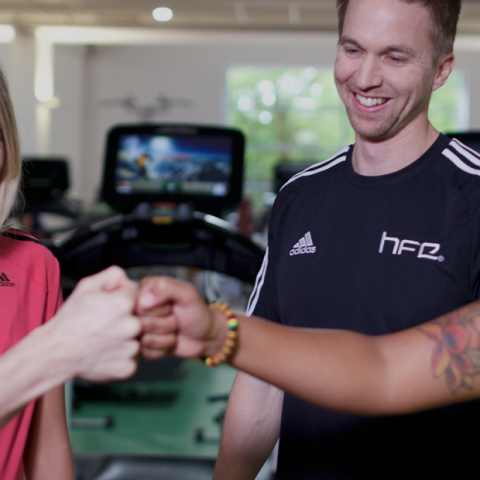Pronation, perhaps one of the most used words when it comes to any kind of analysis of gait. Pronation has been viewed by many as a negative action that should be prevented or reduced. Evidence of this line of thinking can be seen on any high street running shop, where anti pronatory shoes and orthotics are offered to cure all runners injuries from shin splints to plantar fasciopathies.
What is the truth about pronation?
Pronation is merely a movement, and pronated is a position. Pronation of the foot occurs about the three planes (sagittal, frontal and transverse). The elements that make a foot maximally pronated are when a foot is abducted, dorsiflexed and everted. Pronation is the movement to this position from any other position.
Why does a foot pronate we might ask? When the foot pronates, it becomes wider, flatter and more mobile. When we strike the ground, there is often an advantage to this happening, particularly when we are on natural undulating surfaces. It allows the foot to adapt to the terrain, so that we get maximum contact and stability with the surface we interact with. This flexible mobile adapter is also quite good at attenuating shock, which is really useful when we take lots of steps in rapid succession.
Why does pronation have a reputation as being bad then?

When a person walks, their gait is as unique as their fingerprint. With an amount of pronation occurring at a particular time that is unique to them. There has been some evidence that by reducing pronation in gait, we can achieve relative rest for some structures, which in an injured person can have them well on the road to recovery. Pronation is not inherently negative, or something which should be corrected. Treatments by medical professionals should be lead by symptoms, which may or may not be caused by pronatory forces.
What should we look for then?
After an injury or reported pain, observing how someone stands, performs a single leg squat, stands on one leg, and walks around a room will give you all of the clues as to whether or not a referral to a healthcare professional is needed.
When a person is in a stood position, any asymmetry may be an indicator that a biomechanical intervention is indicated. Instability in single leg squat or asymmetry in walking gait are also indicators. Just because a person displays a pronated foot type does not mean it means correction, but if it is accompanied by lower limb pain then it may be prudent to refer to a professional.
Does pronation matter?
A commonly used model by biomechanists is the tissue stress model. What this model explains is how all human tissues (just like any material, eg wood, metal, concrete) has a zone of stress in which they can withstand stress. Forces can differ in size, direction and frequency. Obviously, we can see that pronation will influence the direction of forces which are acting on human tissues, which is why pronation does matter, but in itself is not the only cause or potential route to treatment.
Changes in stress outside the tolerance of a tissue cause injury. So we can see how an individual may lift a heavier weight which would increase the magnitude of force on a tissue and cause an injury. Likewise they may run further than before and increase the frequency of a load which can lead to injury. Aside from just controlling direction of movement healthcare professional may want to look at reducing frequency and magnitude of forces.
What part can a fitness professional play?
Fitness professionals should ensure that an appropriate increase in training load is applied because this is the key to developing tissues hat they can take greater stress without resulting in injury. Take the time to look at your client’s gait, and standing posture. If there is asymmetry, or instability and symptoms of injury, refer them to a Podiatrist that has interest in biomechanics. Not all podiatrists are equal!


